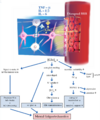File:Blood-brain barrier and proinflammatory cytokines.png: Difference between revisions
Jump to navigation
Jump to search
imported>Daniel Mietchen |
(== Summary == Importing file) Tag: Server-side upload |
||
| (One intermediate revision by one other user not shown) | |||
| Line 1: | Line 1: | ||
== Summary == | == Summary == | ||
Importing file | |||
Latest revision as of 19:52, 11 March 2022
Summary
Importing file
File history
Click on a date/time to view the file as it appeared at that time.
| Date/Time | Thumbnail | Dimensions | User | Comment | |
|---|---|---|---|---|---|
| current | 19:52, 11 March 2022 |  | 1,184 × 1,421 (957 KB) | Maintenance script (talk | contribs) | == Summary == Importing file |
You cannot overwrite this file.
File usage
There are no pages that use this file.